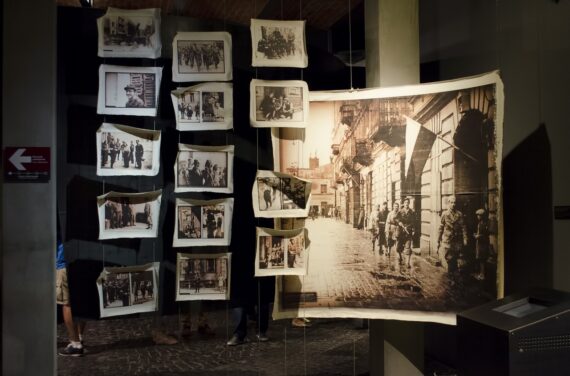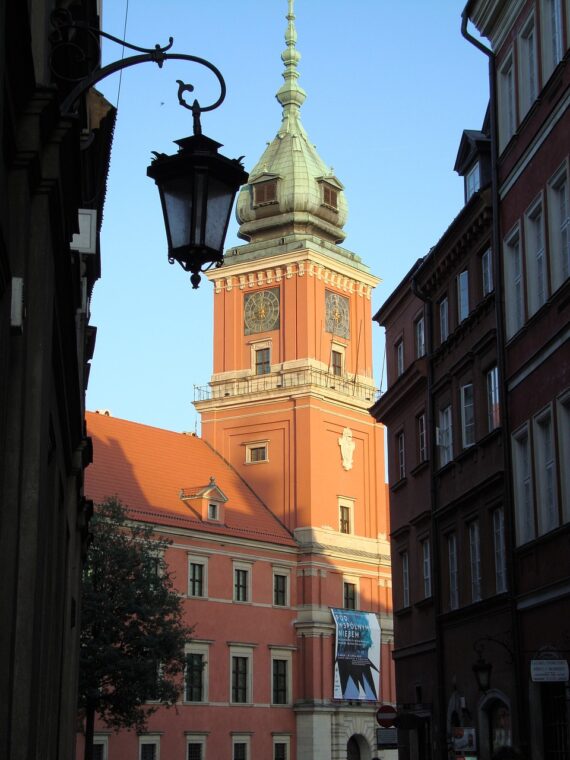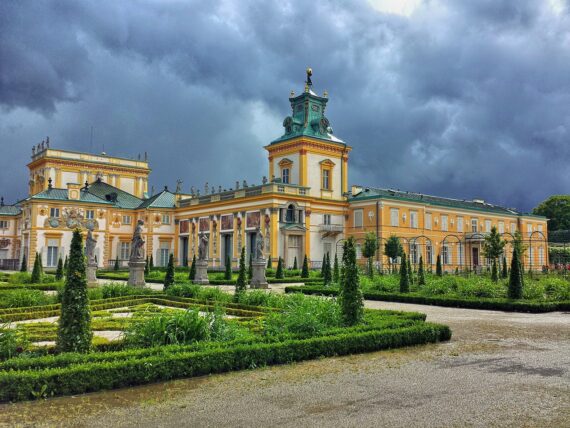Warsaw, the vibrant heart of Poland, is a place where history and culture collide in the most intriguing way. While visiting the city, it’s worth not only to stroll through the Old Town, go to the 30th floor of the Palace of Culture and Science or eat pierogi in a traditional Polish restaurant. Warsaw has much more to offer, including numerous museums, among which everyone will find something for themselves.
Check out our tours in Warsaw >
Introduction to Warsaw's museums
Warsaw's museums are more than just buildings; they are custodians of stories, art, and innovations that have shaped Poland and the world. From the poignant history of the Warsaw Uprising to the opulent halls of royal residences, each museum offers a unique perspective on the city and its people. Each is a gateway to different eras and narratives, offering insights into the resilience, creativity, and spirit of Poland. Take a look at Walkative’s guide highlighting 5 must-visit museums in Warsaw, ensuring you capture the essence of this unusual city during your stay.
Warsaw Rising Museum: A historical deep dive

The 1944 Uprising: A story of courage
The Warsaw Rising Museum is one of those you simply cannot miss. It showcases the history of the Warsaw Uprising of 1944, including exhibits on life in Warsaw during World War II, the resistance movement, the uprising itself, and its aftermath. Visitors can see artefacts, photographs, documents, and multimedia presentations that provide insight into the courage and sacrifice of the Polish people during this pivotal period in history.
Immersive exhibits and the "City of Ruins" film
In the Museum, be sure to watch the film "City of Ruins" showing the enormity of the destruction caused during and after the Uprising, providing a powerful sense of the sacrifices made for freedom. Immersive multimedia presentations bring the struggles of the Warsaw Uprising to life. Each exhibit is carefully curated to engage visitors, offering a deeply personal perspective on the impact of war on individual lives and the community's unbreakable spirit.
Planning a visit
The Warsaw Rising Museum is definitely worth visiting, especially if you have an interest in World War II history or want to learn more about the resilience and bravery of the Polish people during that time. The museum offers a comprehensive experience that helps visitors understand the significance of the Warsaw Uprising and its impact on Polish history long after the war. The Museum is closed on Tuesdays and it’s free on Mondays.
POLIN Museum: Celebrating Polish Jewish heritage

A millennium of history: Contributions and tribulations
The Museum of the History of Polish Jews offers a comprehensive look at the rich history and culture of Polish Jews. Visitors can explore various exhibits covering a wide range of topics, including the thousand-year history of Polish Jews, their contributions to Polish society, culture, and economy, as well as their experiences during times of persecution and genocide. All of them are thoughtfully curated and offer a compelling narrative. The museum also hosts temporary exhibitions, educational programs, and cultural events aimed at promoting understanding and tolerance.
Award-winning design
Not only does the POLIN Museum offer a profound educational experience, but its architecture is also a masterpiece, blending seamlessly with the narrative journey within its walls. All in all the museum has become a symbol of hope and reconciliation, inviting visitors from around the world to learn and reflect.
Planning a visit
While planning the visit, make sure you have at least 2-3 hours for it, however if you want to go through everything in detail, you'll need much more time. The Museum is closed on Tuesdays and it’s free on Thursdays.
The Royal Castle: A window into Polish royalty

Historical significance and artistic masterpieces
The Royal Castle isn’t just a museum but also a historical landmark showcasing Polish heritage and art. This former royal Residence offers visitors a rich cultural experience. Whether you're interested in history, art, or simply enjoy exploring beautiful buildings, the Royal Castle is a must-see attraction in Warsaw. During your visit, make sure you'll spend some time exploring the Great Apartment of King Stanisław August, Knight's Hall, Marble Room, and Canaletto Room. While planning a visit it is worth remembering that the Museum is closed on Mondays and it’s free on Wednesdays.
Wilanów Palace: The Polish Versailles

Baroque splendour and historical insights
The Wilanów Palace, located a little bit further from the centre of Warsaw, is one of the most significant monuments of Polish culture and history. It’s often referred to as the "Polish Versailles" due to its architectural style and layout reminiscent of the Palace of Versailles in France. The construction of the palace began in 1677 under the orders of King John III Sobieski, a notable figure in Polish history known for his military successes, including the Battle of Vienna in 1683. The palace was intended as a residence for the king and his wife, Queen Marie Casimire. The palace combines elements of baroque, rococo, and neoclassical architecture. The exterior features a grand façade adorned with columns, sculptures, and ornate decorations. Surrounding the palace are beautiful gardens that include avenues, fountains, ponds, and sculptures, creating an extremely picturesque setting. While planning a visit remember that the Museum is closed on Tuesdays and it’s free on Thursdays.
Museum of Life Under Communism: A retro journey
Daily life under communism and its impact on Poland
The Museum of Life Under Communism aims to provide visitors with an immersive experience of everyday life under communism in Poland. It seeks to educate visitors about the political, social, and economic realities of the communist regime, as well as the cultural and lifestyle aspects of that period. The museum features a variety of exhibits that recreate different aspects of life under communism. Visitors can see examples of consumer goods, household appliances, clothing, and other artefacts that were common during the communist period. The Museum of Life Under Communism serves as a valuable resource for understanding and remembering the realities of everyday life in communist Poland, offering visitors a glimpse into a significant chapter of the country's history. You can visit it any day of the week - as this museum is private, it's open every day.
The legacy of Warsaw's museums
The museums of Warsaw are more than just buildings housing relics of the past; they are vibrant testimonies to the enduring spirit, resilience, and cultural richness of Poland. Through their diverse collections, they narrate the complex aspects of Polish history, art, and society. Their legacy lies not only in their preservation of history and culture but also in their ability to inspire and educate future generations. Combined with exploration of Warsaw with Walkative! walking tours will give you a profound understanding of the forces that have shaped this nation, city and its people.



